It arrived here in 2017 just as the compact SUV sector was getting into its stride, and Kona has accounted for one in four sales for Hyundai since, one-quarter of them electric.
Now its successor has arrived, bigger, better equipped and more out-there in appearance, with added model choice.
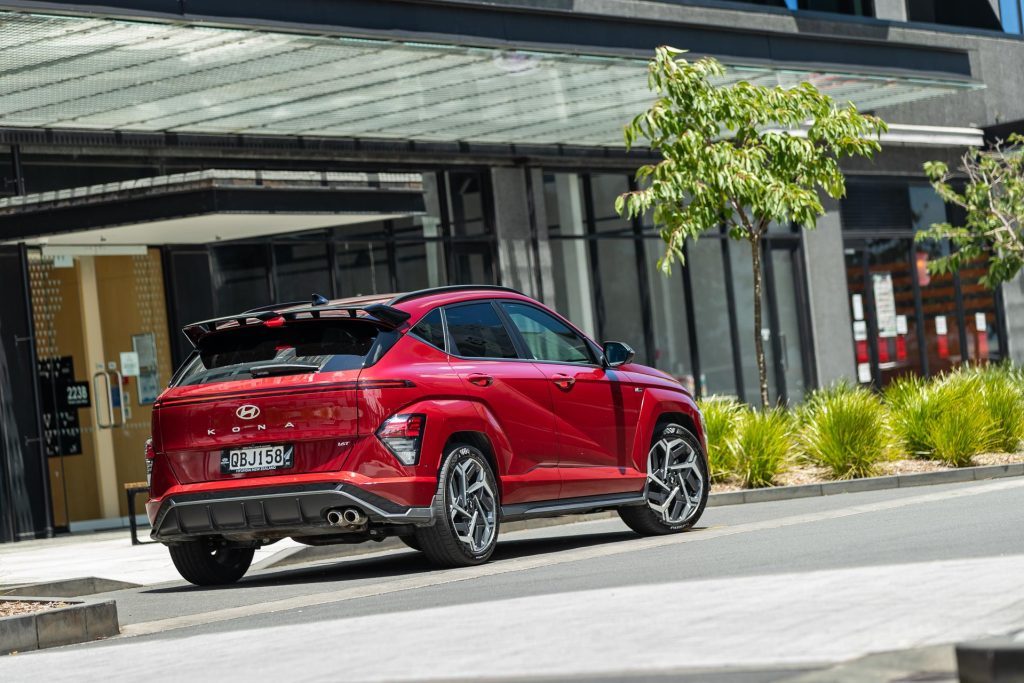
Like most newcomers, it is more expensive. Prices range from $43K for the Active 2.0 variant to $66K for the Limited N Line hybrid.
Two years ago, Kona kicked off at $31,490 and the predecessor to the vehicle you see here was $49,990.
It is now $64,990, with the same engine and AWD set-up, still with the N Line spec but now a Limited model. It also comes with a new eight-speed automatic and is the best equipped model in the range.
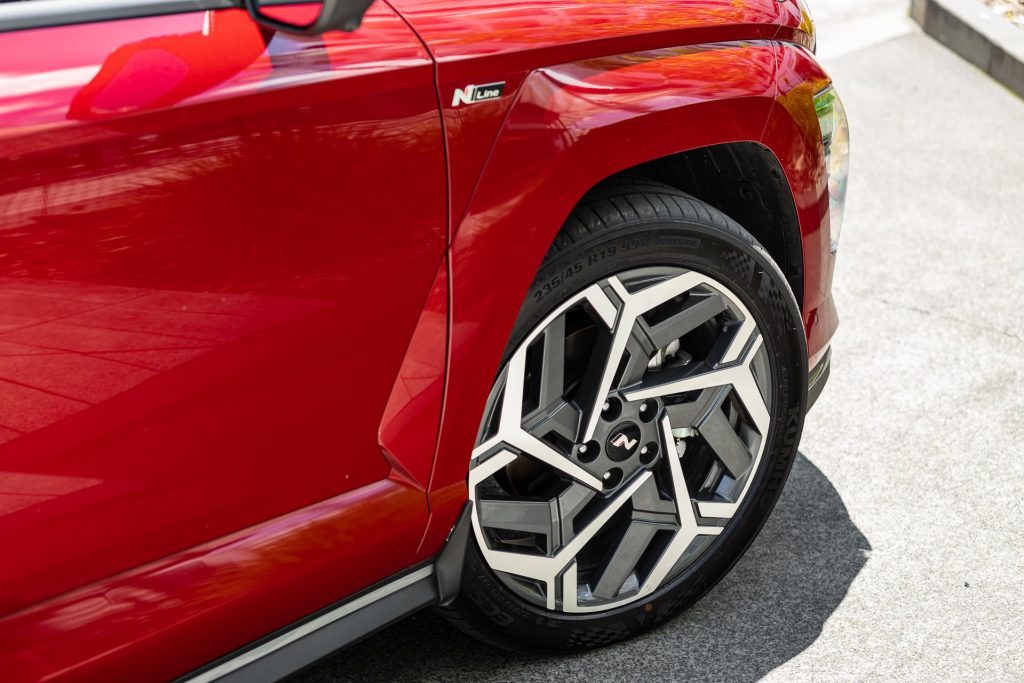
Hyundai styled the electric version of the new Kona first, and based the ICE power models on that. The length is out by 145mm to 4350mm total, while the wheelbase is-60mm longer.
It rides on the third-generation K platform, with torsional rigidity increased by 10 per cent. Acoustic windscreen and improved door seals also contribute to improved NVH performance.
The look is more windswept than the original. There are active air flaps in all models instead of a conventional grille, while the most striking styling feature is the full-width ‘horizon’ DRL up front, ours at times with condensation bubbles.
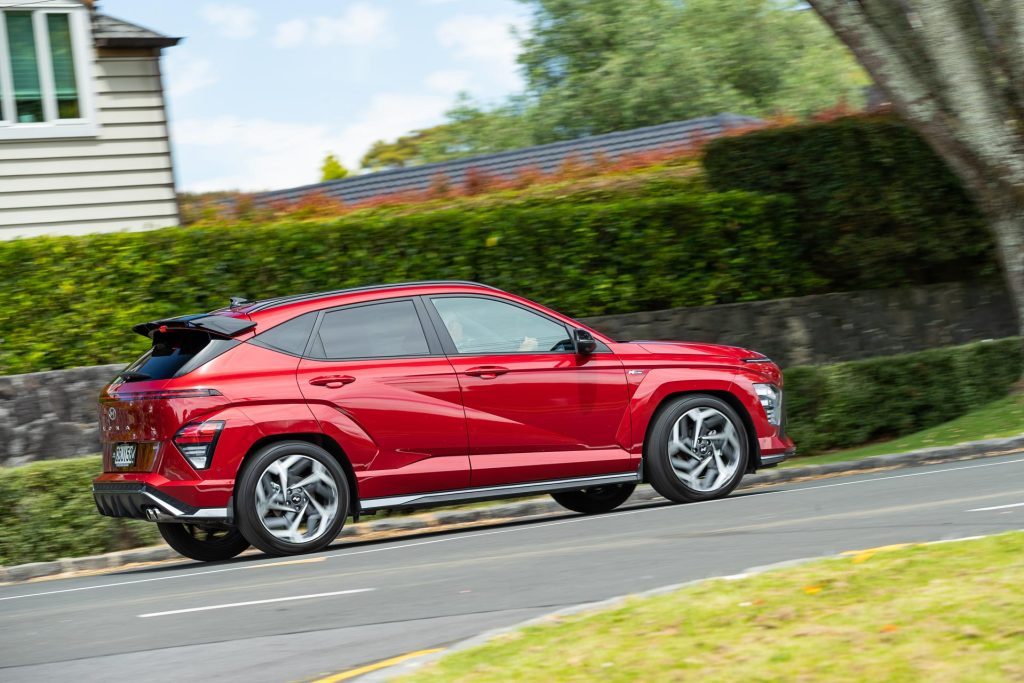
The main headlights are set lower, imparting a look of blindness to my mind; I preferred the original’s slit-eyed visage. However, there’s no denying the aero effects, the Cd figure falling from 0.32 to 0.30 despite the increased size.
This expansion translates into a more spacious passenger area too – rear seat occupants gain 77mm more legroom – and luggage capacity rises to 407L, up from 374L previously.
When the rear seats are folded down, space increases by 85L to 1241L. Beneath the two-level floor is a full-sized spare. Under both bumpers are skid plates.
Step inside and you’re greeted by twin 12.3-inch displays for instruments and multimedia functionality, all within the same panel and part of a ‘floating’ horizontal dashboard. The shift lever has gone, replaced by a shift-by-wire gear selector on the right side of the steering column.
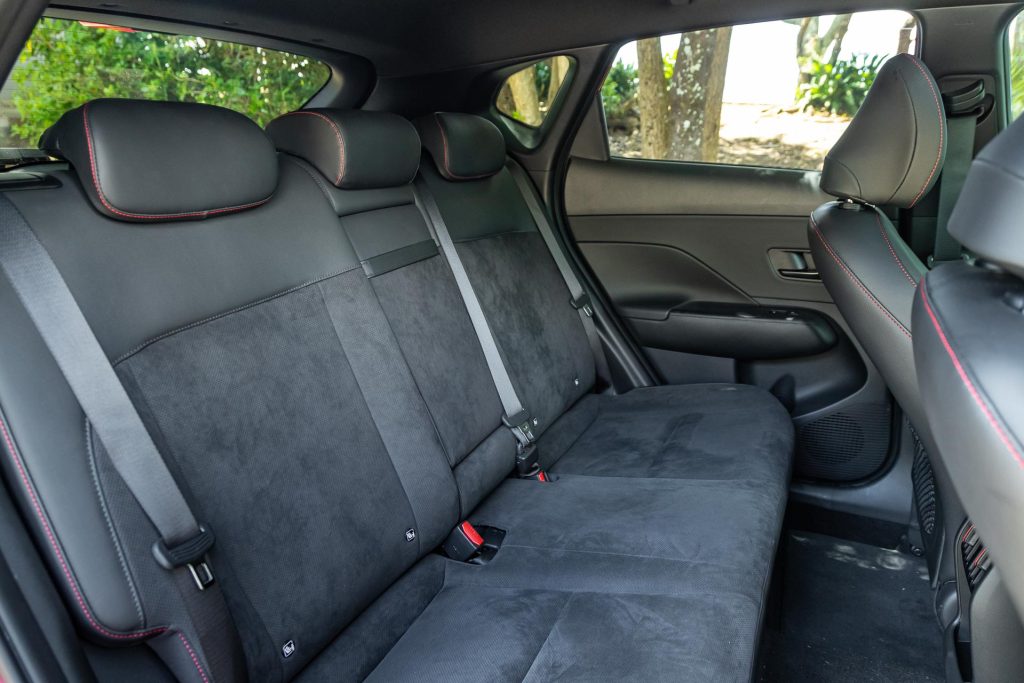
For the price there’s a disappointingly high proportion of hard plastics, especially on the dash and doors. On the upside, the seat electrics motor back to facilitate entry, and HVAC controls are entirely separate from the touchscreen.
New Kona is available with a range of powertrains and while the 1.6T is the strongest, the hybrid makes as much torque but uses roughly half as much fuel.
Under the hood of the former is a familiar 1.6 turbopetrol outputting 146kW/265Nm and the power is sent through an eight-speed automatic that spins all four wheels.
Rightcar states overall consumption at 8.5L/100km (194g/L) and while going easily we sometimes saw low 7s, the overall figure was more often in the 9s, occasionally rising into the 10s.

The new eight-speed auto is a slick shifter but we still didn’t manage to match the claimed sprint time of 7.5sec, a best of just over eight seconds as good as it got. But five seconds for the 80-120 shimmy makes passing simple enough.
There’s sufficient turbo-assisted urge, even in the Eco mode, to make the Sport mode redundant. We left things in Normal mostly because it offers more than enough punch. Lag is limited too.
As we noticed on our initial drive as part of the Kona’s launch to media, there’s not much in the way of road noise – our maximum cabin dB reading only just made it into the low 70s – and ride quality is well sorted, keeping roll contained without any slow-speed jiggle.
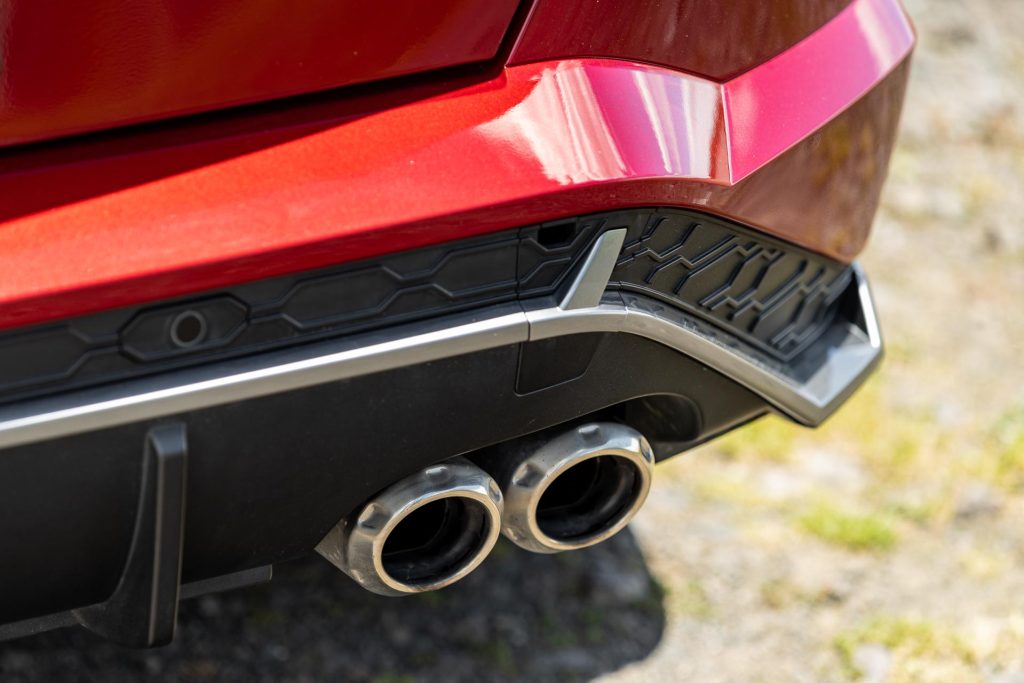
It’s not the drive itself that we have an issue with. Rather, it’s the safety arsenal that’s always on your case.
It has everything you might want to mitigate crashes or dingles but the bonging annoys, mainly on out of town sorties. Each time you shut down, the safety items reset.
So let’s begin with those that can be silenced. While this has traffic sign recognition, it bongs when you overstep the mark. You can turn this off in three easy touchscreen steps.
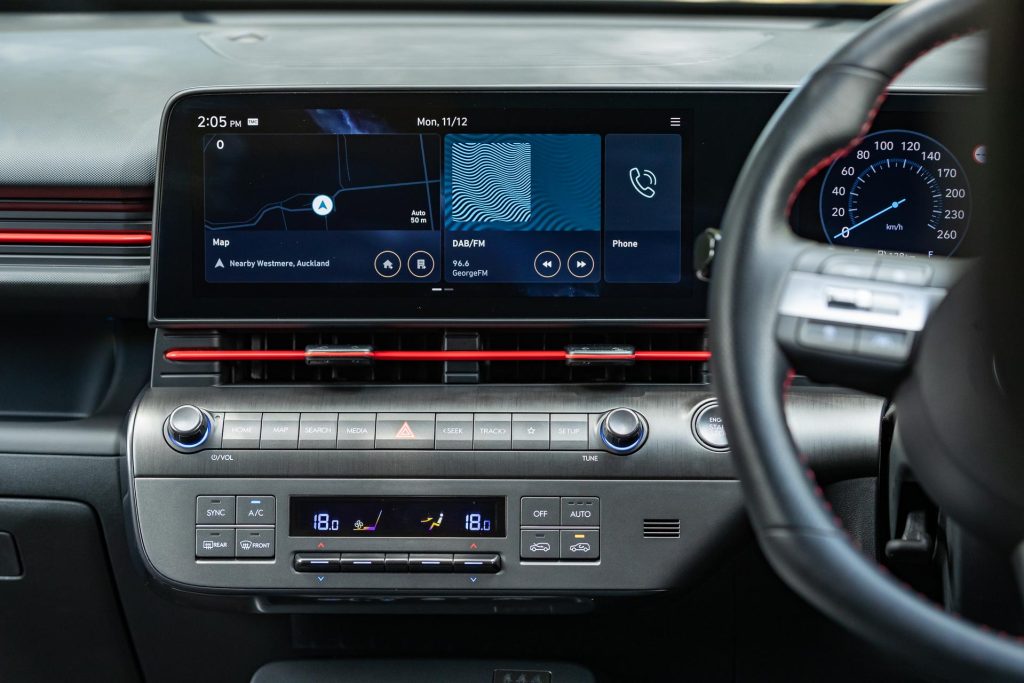
Then, you should tap on the Map button because up pops traffic sign recognition again but in the upper right side of the touchscreen, sans the bonging.
And then the bonging starts up again. This time it’s because you’ve taken your eyes off the road while you were busy cancelling the bong fest.
Either that or the camera system deems you’re fatigued – it gets it right occasionally – and the bonging goes on long term, presumably to wake you up.
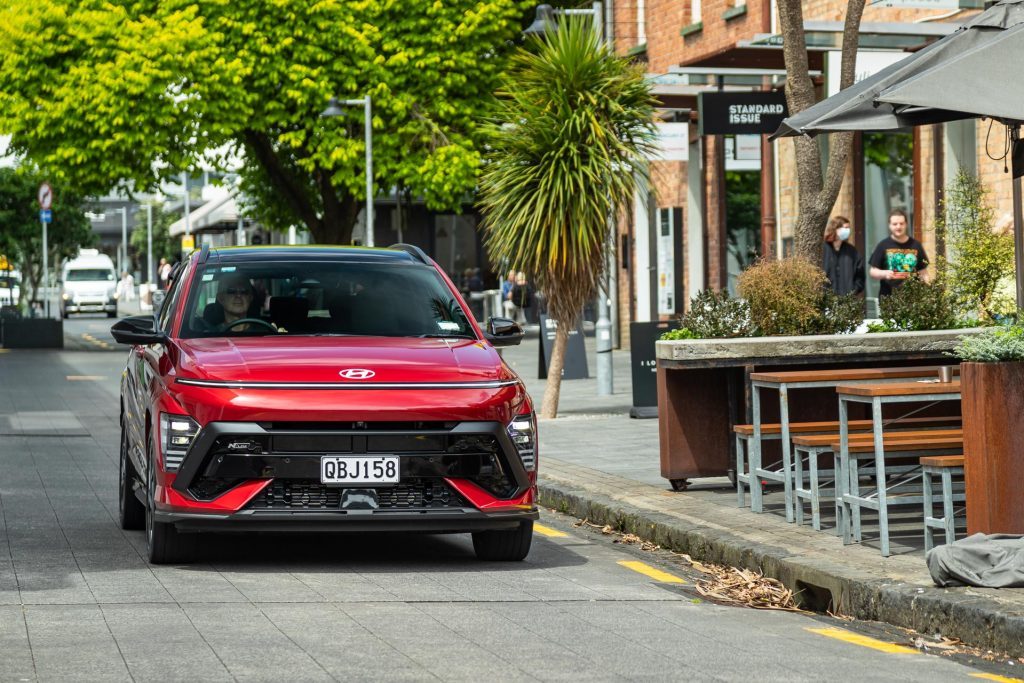
That’s when we tried a tape trick. If you pull to a halt, you can turn off the forward collision warning and fatigue systems but it’s easier to just tape over the in-car camera. It bongs once to say the system isn’t working and then shuts the hell up.
The only other thing you might choose to do is push and hold on the lane keeping button and the steering stops jerking around in your hands. Now you’re good to go.
If enough complain about the bonging, Hyundai might delete it via an over-the-air update. So feel free to whinge.
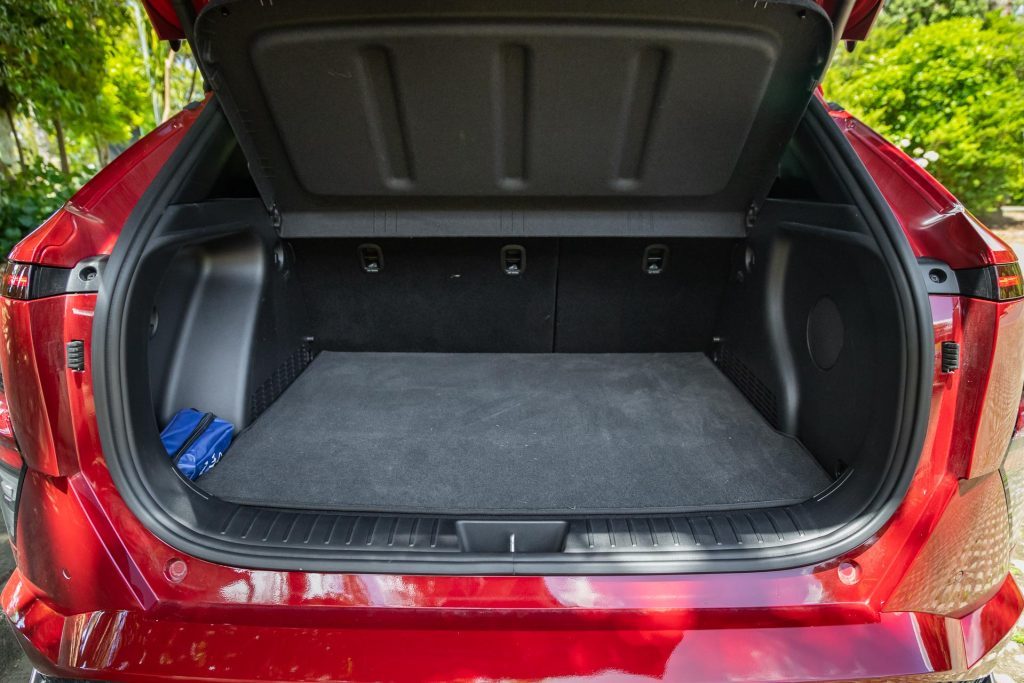
The turbo AWD model is specified to the nines. And it is available exclusively with the N Line pack. This gives it a more dynamic look.
Key exterior features include body-coloured cladding, N Line front bumper and side skirts, 19-inch alloys, and a twin-wing spoiler. Inside there’s an N Line steering wheel, and leather/Alcantara seats with red highlights.
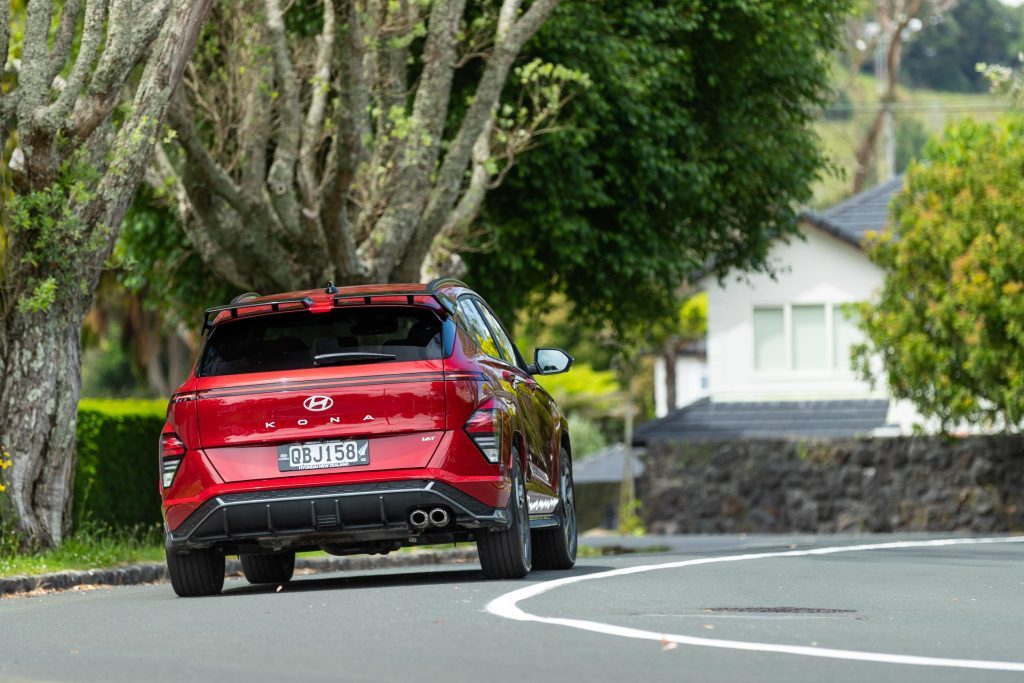
N Line variants can be had with an optional two-tone finish comprising a contrasting black roof and mirror caps. All Konas come with alloy wheels, LED headlights and taillights, and dual-zone climate control.
Higher grades like this get a BOSE eight-speaker sound system and powered tailgate. Seats are electric, with heater elements and ventilation in the 1.6T, and there’s also a heated wheel.
SmartSense active safety items include AEB, Parking Collision Avoidance Assist-Reverse, BSM and a surround view monitor. Other new features include junction turning function and blind spot collision avoidance.
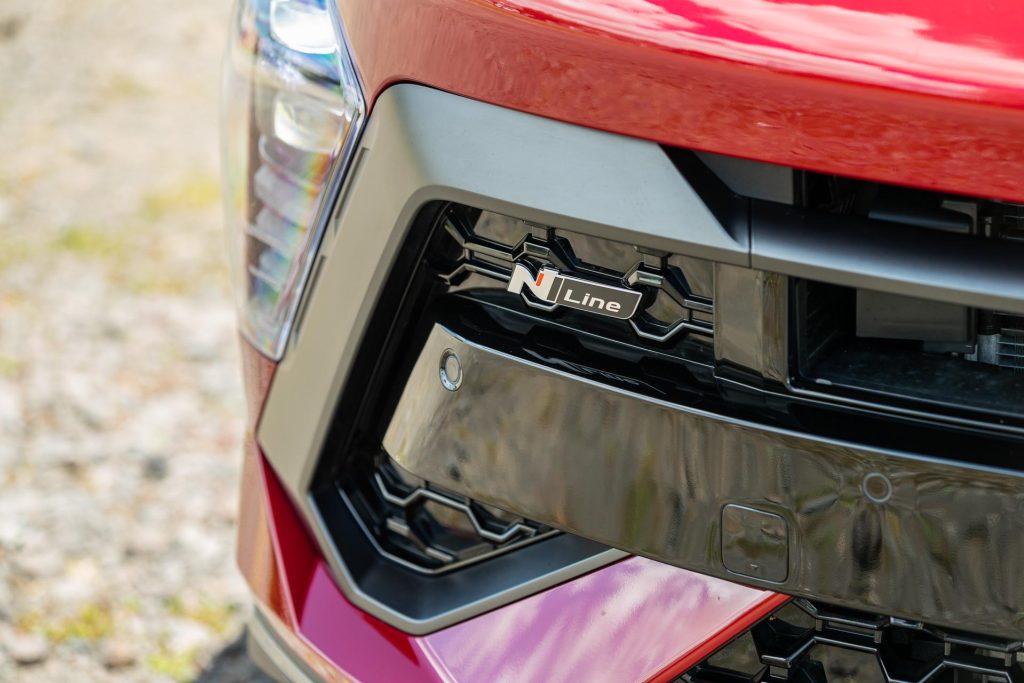
Options are limited to a glass sunroof adding $2000 and the aforementioned two-tone paint option ($790). Warranty lasts for five years/150,000km.
In essence, this is a bigger, more practical, better specified Kona but is more expensive and therefore somewhat harder to justify than before.
We’d probably instead opt for one of the four hybrids, three of which are cheaper and all are easier on gas.
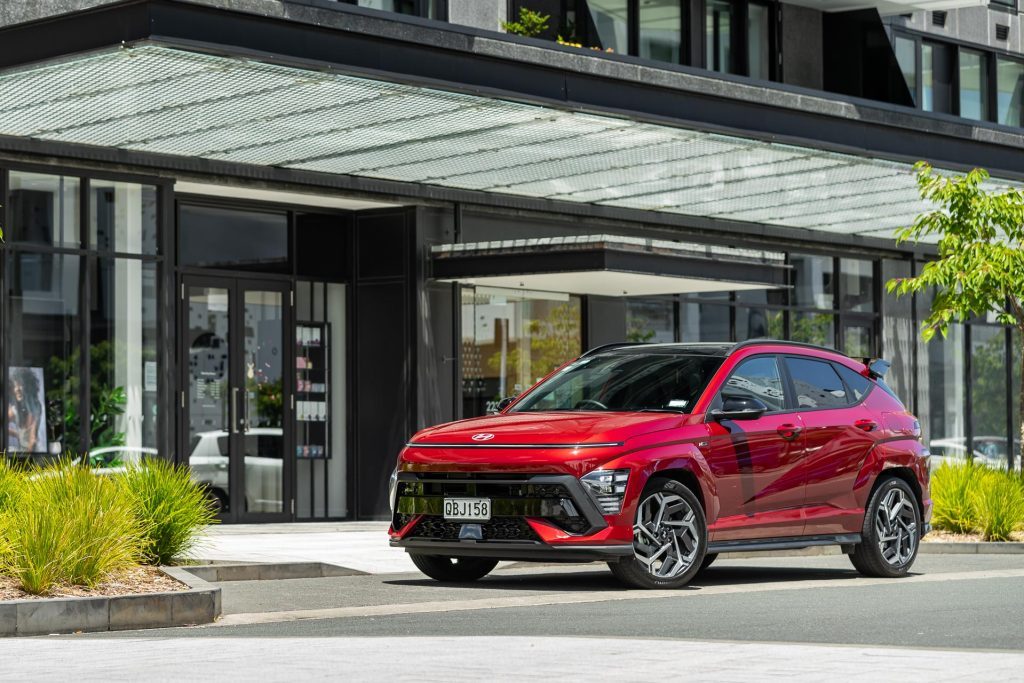
Meantime, the sector is now jam-packed with less expensive competition, ten on the last count, including electric offerings like the BYD Atto 3.
| Model | Hyundai Kona 1.6T N Line Limited |
| Price | $64,990 |
| Engine | 1598cc / IL6 / T / DI |
| Power | 146kW@6000rpm |
| Torque | 265Nm@1600-4500rpm |
| Drivetrain | 8-speed auto / on-demand AWD |
| Fuel Use | 8.5L/100km |
| C02 Output | 194g/km |
| 0-100km/h | 8.08sec |
| 80-120km/h | 5.22sec (147.5m) |
| 100-0km/h | 35.92m |
| Stability systems | ABS, ESP |
| Safety | AEB, ACC, BSM, LDW, RCTA, ALK, AHB |
| Luggage Capacity | 407-1241L |
| Tow rating | 600kg (1300kg braked) |
| Fuel Capacity | 47L |
| Service intervals | 12 months/10,000 km |
| Warranty | 5 years/150,000km |
| ANCAP rating | Not rated |
| Weight | 1585kg (claimed) |
This story first appeared in the February 2024 issue of NZ Autocar magazine.


